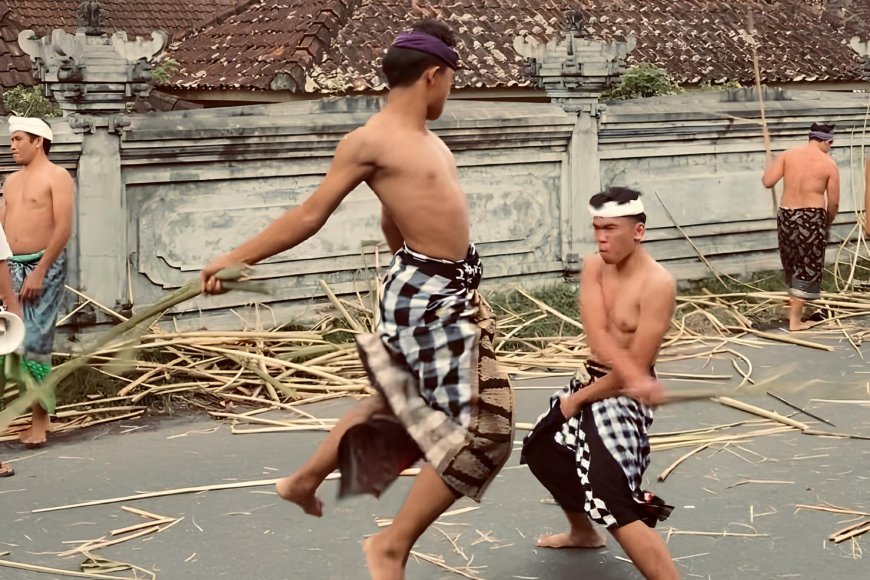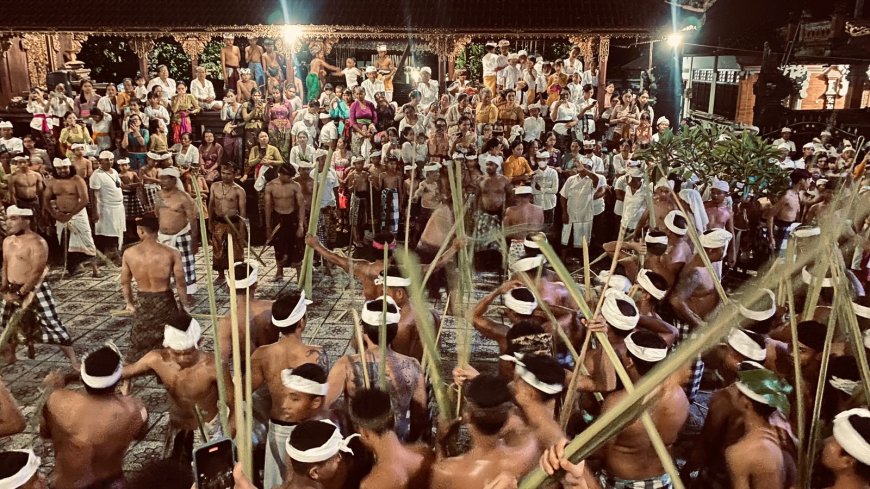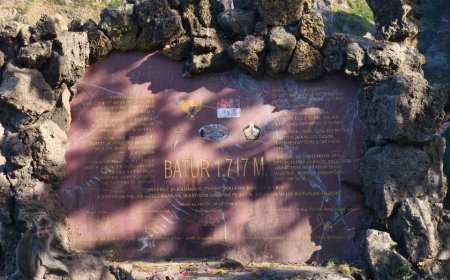Matigtig: A Unique Tradition of Bebandem Village to Ward Off Disease and Maintain Ecological Balance
In Bebandem Village, Bebandem District, Karangasem Regency, Bali, there is a sacred tradition called Matigtig, performed as a means to ward off epidemics or plagues and to cleanse the community's inner self from negative influences. This ritual is held every two years at Jaba Pura Bale Agung, Banjar Desa Tengah, Bebandem Traditional Village.

The word matigtig comes from the Balinese word tigtig, which means "to strike in succession." In this ritual, participants, consisting of men of various ages, face each other and take turns striking each other’s backs using papah biu or banana leaves. During the process, the participants do not wear upper garments, symbolizing simplicity and openness of spirit in receiving the blessings of the ritual. The ritual is conducted spontaneously, allowing participants to freely choose their opponents during the process, yet without feelings of anger or negative emotions even when struck.

The Matigtig Tradition Procession (Source: Personal Collection)
This tradition is believed to serve as a spiritual means to neutralize the “enemies” within oneself, such as negative influences that can lead to inner imbalance. According to local beliefs, matigtig helps eliminate Tri mala (three impurities of the soul), Sad ripu (six enemies within), and other negative elements that can disrupt community life. Additionally, this ritual is thought to cleanse the body of inner impurities such as anger, hatred, and greed.
The implementation of matigtig begins with a grand ritual called Mabiasa, which involves offerings and purification that engage Ida Bhatara from the Bebandem and Bugbug customary villages. This ceremony aims to bless the Bebandem area with peace and protection. Only after this ceremony is completed is the matigtig ritual performed, demonstrating the spirit of mutual cooperation and community togetherness.

Bruises After the Matigtig Procession (Source: Personal Collection)
After the matigtig procession is completed, participants are typically seen with marks from the strikes on their bodies, particularly on their arms and backs. These marks serve as a physical sign of their involvement in this meaningful sacred tradition. Although they may appear bruised and red, these marks symbolize bravery and sacrifice in carrying out the ritual to cleanse themselves of negative influences. After the procession, they are usually treated with traditional ointments to relieve pain and assist in the healing process. These marks are considered part of their efforts to maintain the balance of nature and the safety of the village from disasters.
Matigtig is not merely a tradition, it is also a manifestation of the knightly spirit of the Bebandem community in maintaining the balance of nature. This tradition shows that the villagers are not only concerned with physical cleanliness but also with spiritual purity, as a way to maintain harmony with nature and keep the village safe from disasters. Matigtig has become an identity of Bebandem culture and a symbol of spiritual strength in preserving the integrity of the village. By preserving this ritual, the Bebandem community believes that their village will always be protected from disasters, both physical and spiritual, while also strengthening their connection to their ancestors and nature. This tradition also serves as a cultural attraction that enriches local tourism, providing opportunities for visitors to witness the unity and strong beliefs of the Balinese people in the harmony of nature and spirituality.

An Energetic Moment in the Matigtig Procession (Source: Personal Collection)
The matigtig tradition also has a profound social dimension, where participation in this ritual is seen not only as an individual effort to cleanse oneself from negative influences but also as a way to strengthen bonds among community members. During the procession, the spirit of togetherness and mutual support is palpable, creating an atmosphere filled with joy and cheerfulness despite taking place in a sacred context. This ritual becomes a moment for villagers to unite, share stories, and get to know one another more closely. The direct interactions that occur during matigtig not only reinforce values of togetherness but also promote high social solidarity among villagers.
As times change, matigtig has also begun to attract the attention of tourists and researchers who wish to understand the uniqueness of this tradition more deeply. Awareness of the importance of preserving local culture is increasing, and the Bebandem community is striving to introduce the matigtig tradition as part of Bali's rich cultural heritage to the outside world. In this way, matigtig is not only preserved as a sacred ritual but also serves as a cultural attraction that can support sustainable tourism. It is hoped that the experiences offered to visitors can expand their understanding of the spiritual and social values contained within this tradition, while also inspiring younger generations to continue to protect and preserve this valuable cultural heritage.
































































